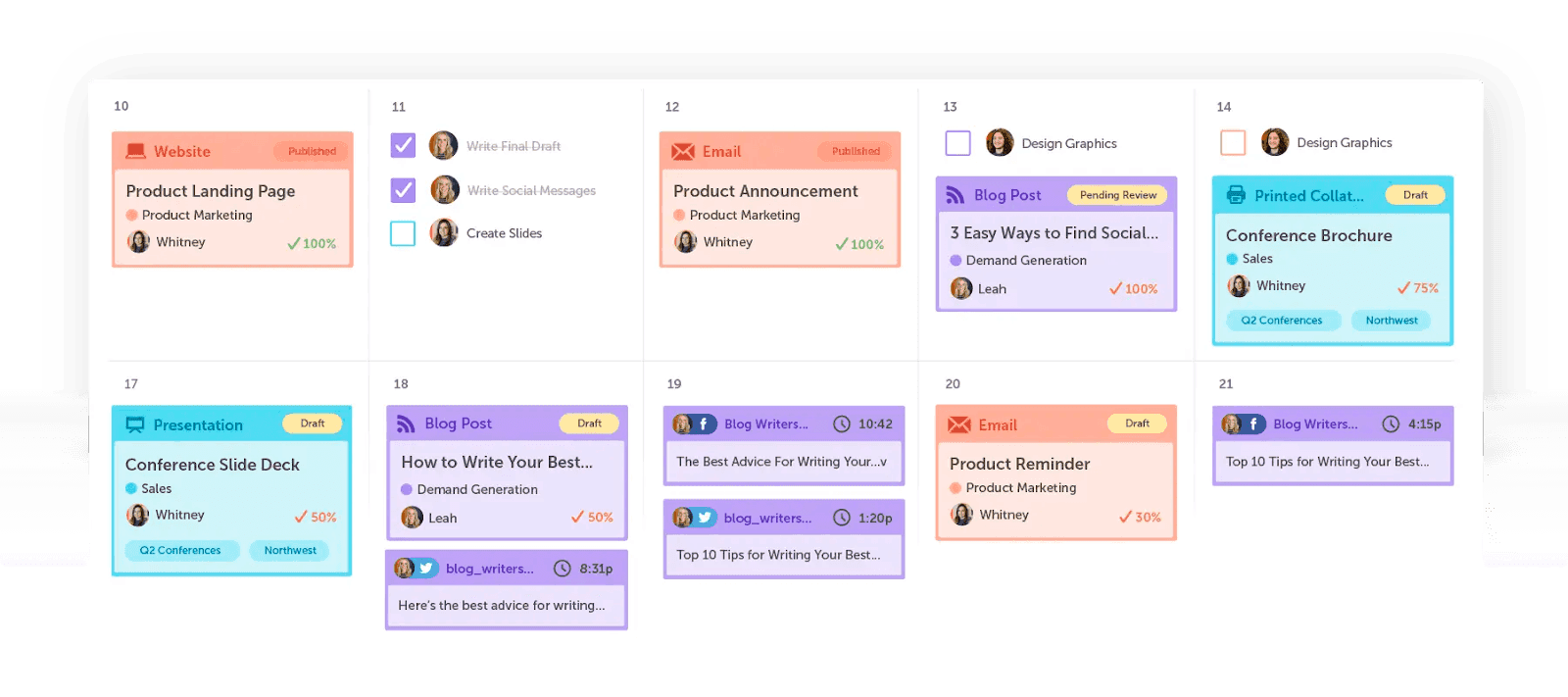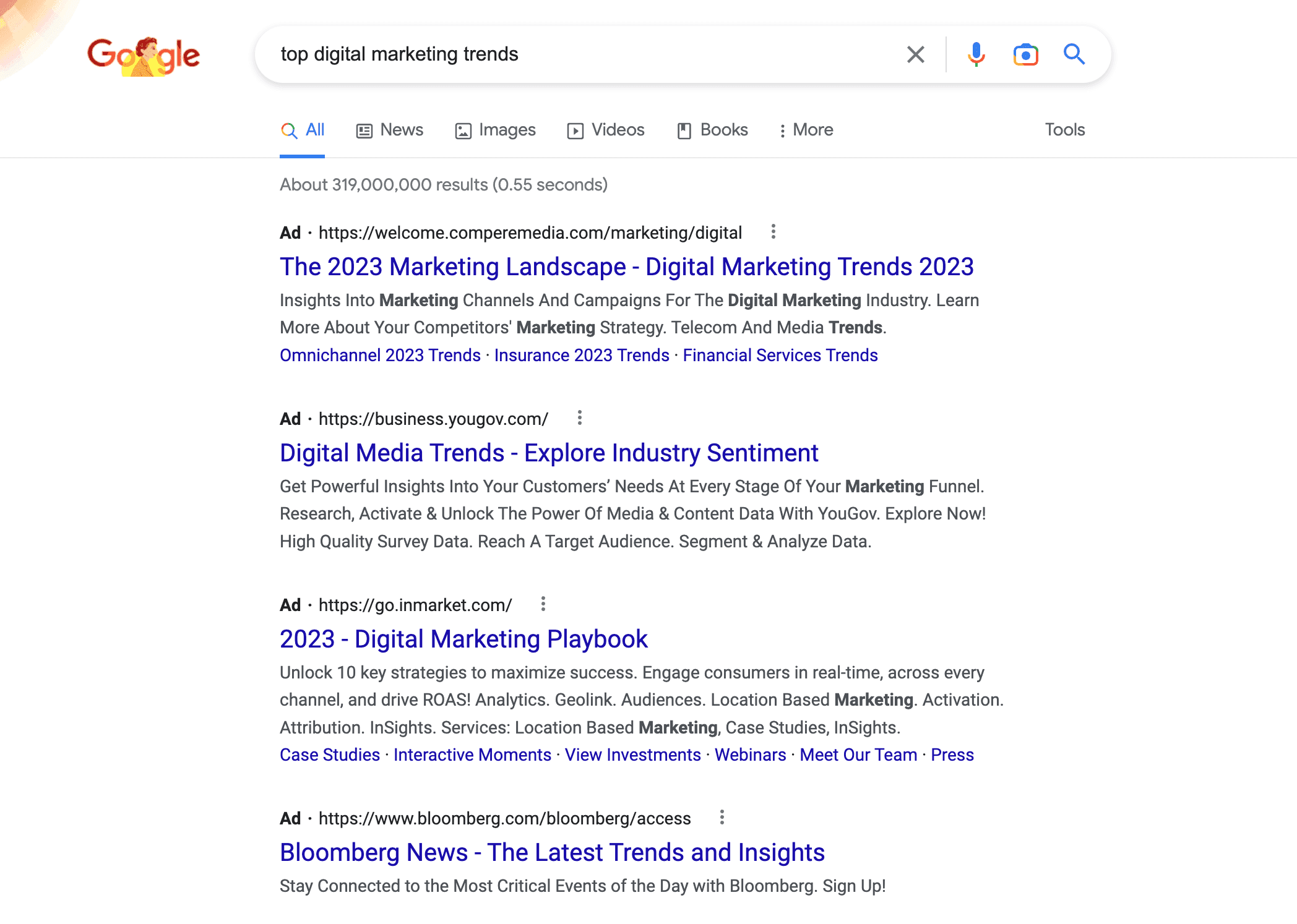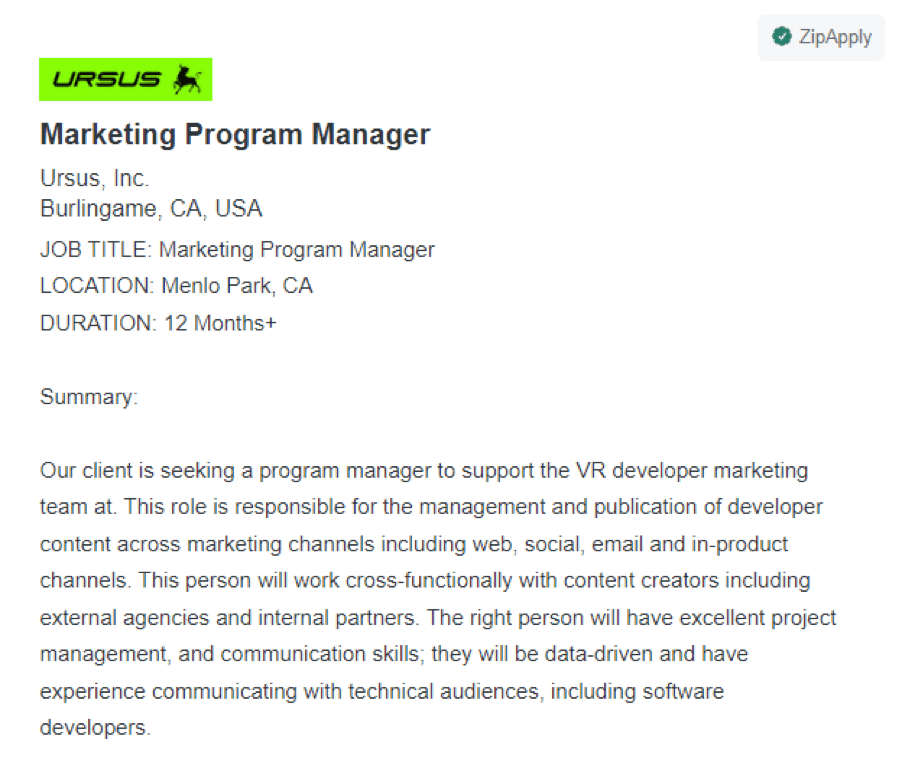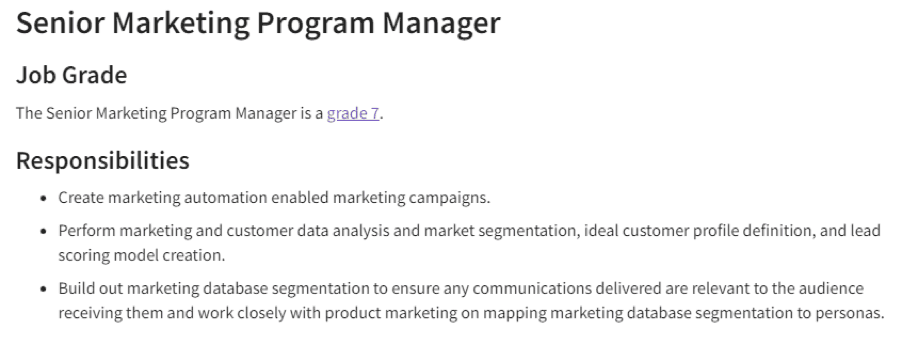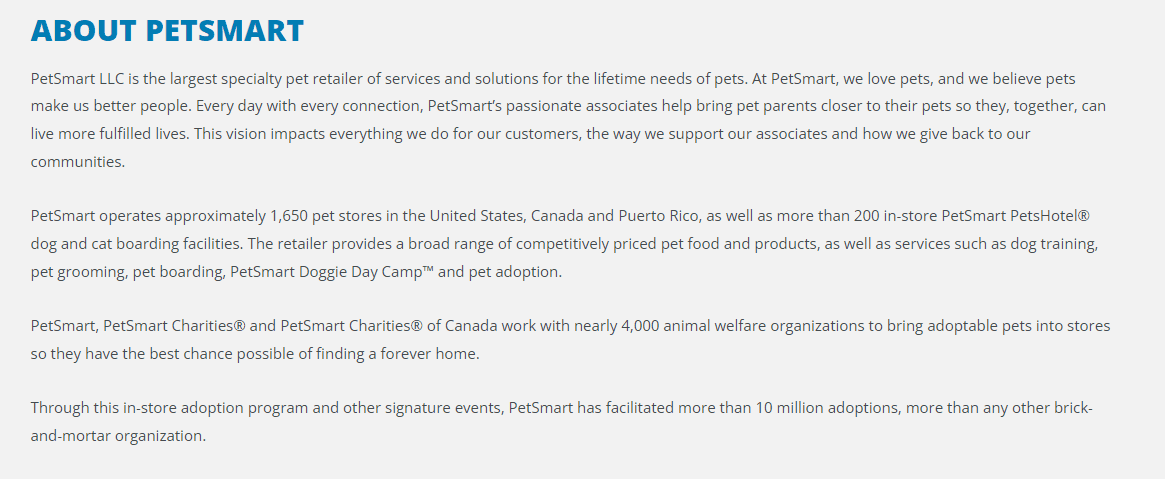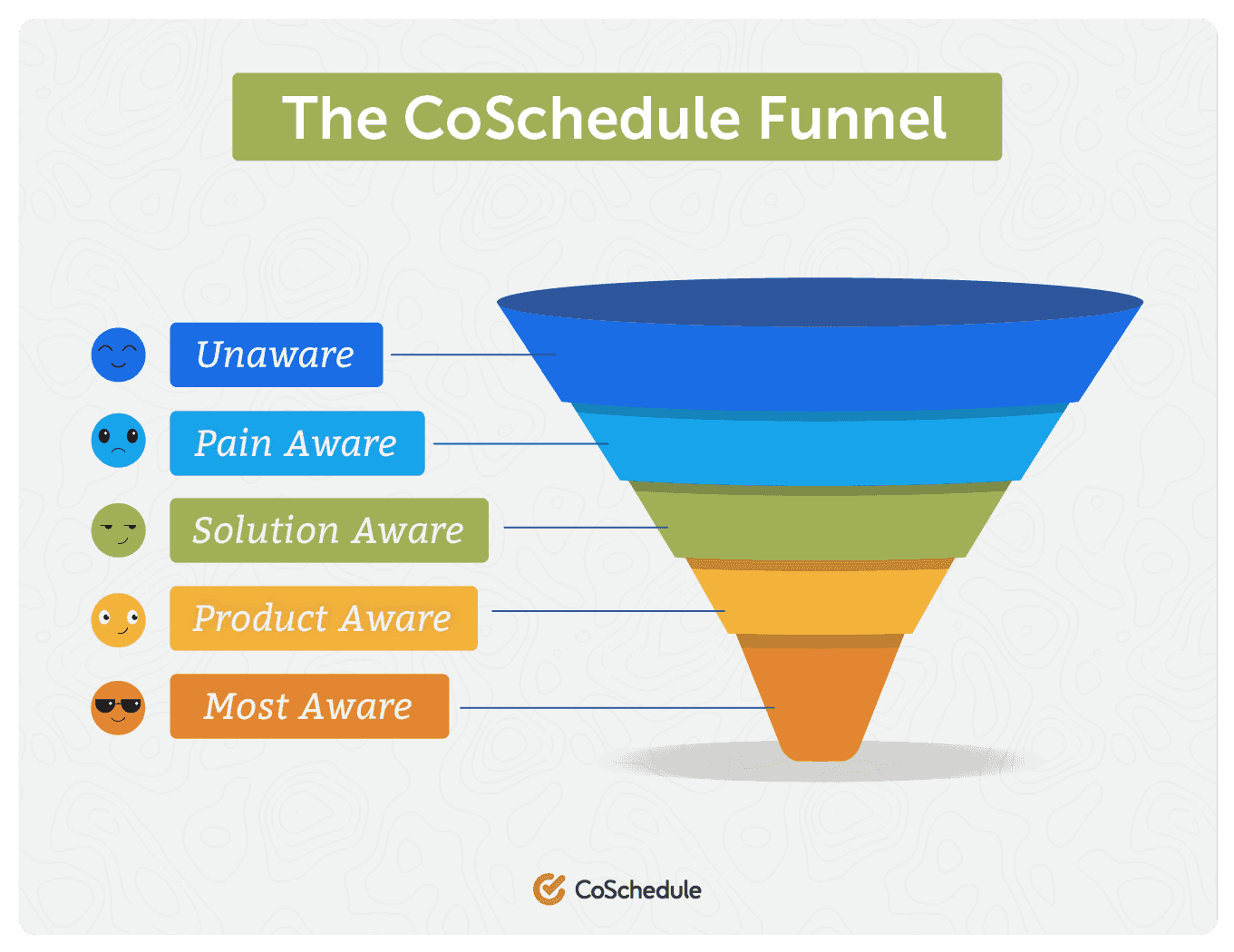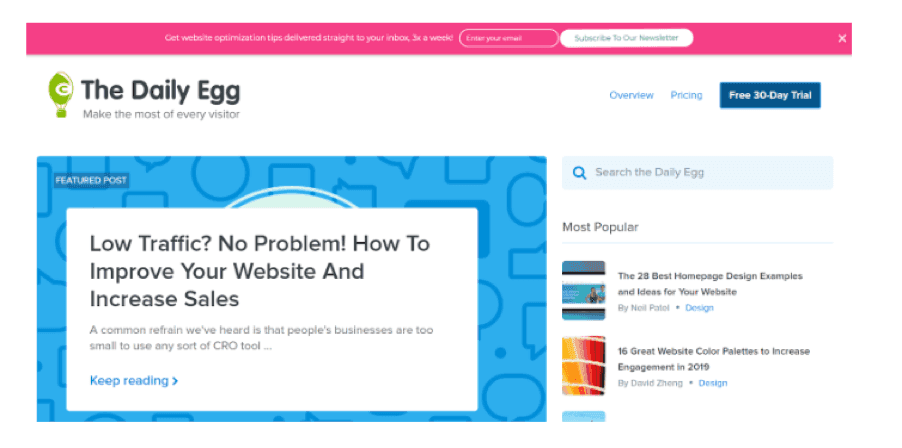Marketing program management is the process of managing the execution and oversight of a group of marketing activities. It’s a way to coordinate marketing efforts in an integrated manner across multiple organizational levels.
Marketing Program Management
The process of managing the execution and oversight of various tactics, channels, and content related to a specific marketing initiative.
This guide covers everything you need to know about marketing program management approaches.
This discipline falls under marketing management best practices.
What Are Marketing Programs?
Marketing programs are the ongoing initiatives, activities, and methodologies that strategize and standardize specific marketing tactics, channels, and content.
Examples of marketing programs include weekly email marketing newsletters, content marketing blogs, search engine marketing paid ad programs, websites, and social media marketing—all of which have their own ongoing, standardized marketing strategies.
Here’s an example of a weekly email marketing newsletter from Away, a startup that designs luggage with features that solve problems for travelers.
The sleek newsletter replicates its luggage design and draws viewers’ attention. This has much to do with understanding brand messaging and voice, a marketing management essential. The photos used are user-generated.
And here’s what your paid ads look like on Google:
What Is Marketing Program Management?
Marketing program management leads, strategizes, and standardizes the vision, implementation, and measurement of ongoing marketing initiatives.
Simply put, it’s the process of managing marketing programs from start to finish. It can manage a single campaign or an entire omnichannel marketing strategy.
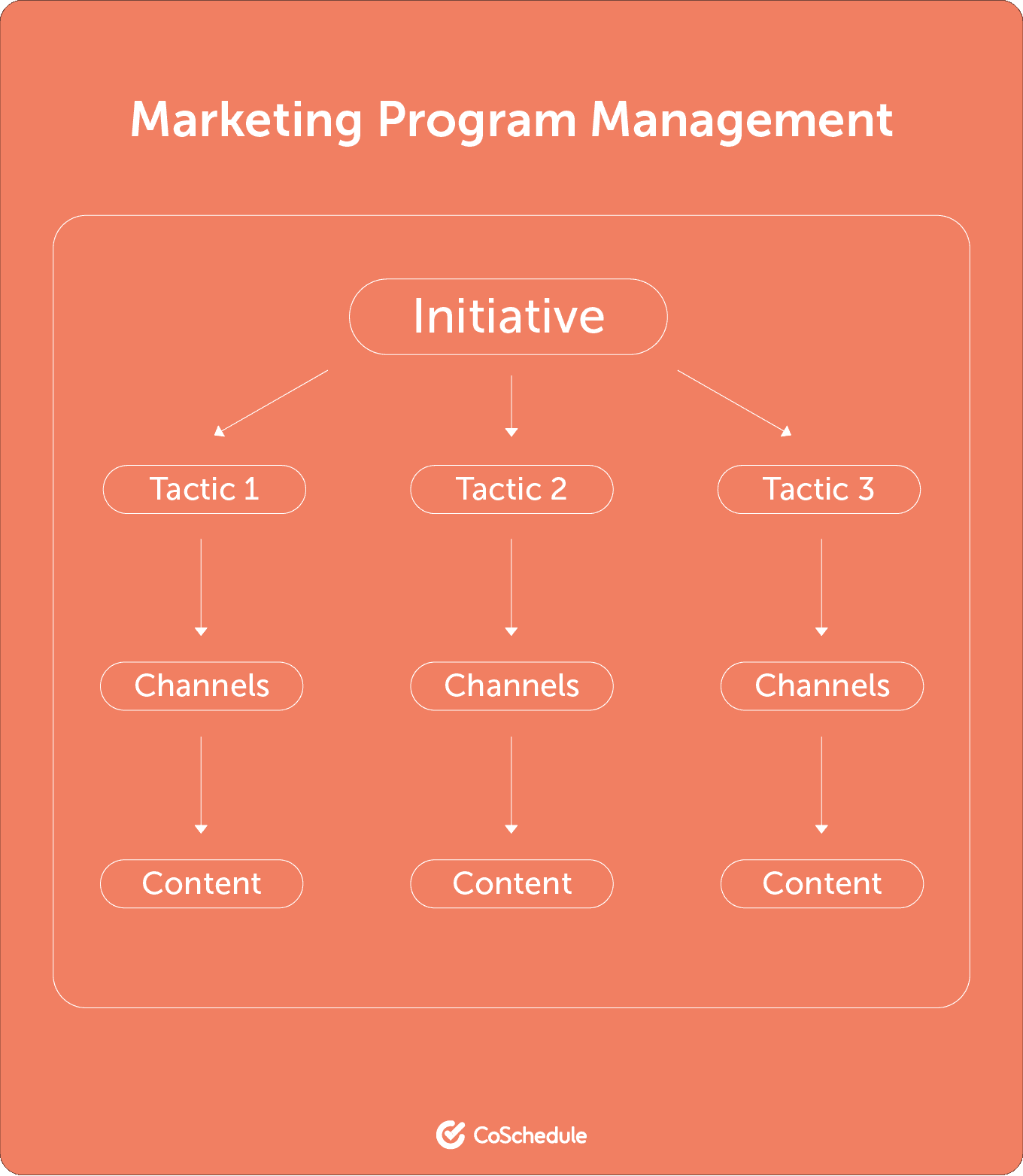
Why Is Marketing Program Management Important?
- Sets vision and strategy— When you have a clear idea of what you want to achieve and how you will get there, it’s easier to develop effective marketing strategies aligned with this vision. For example, if R&D has created a new product, they might need some help from the marketing team when designing their packaging to stand out on shelves next to competing products. Plus, it impresses consumers who come across it while shopping at stores like Wal-Mart or Target.
- Groups projects under a shared objective— Marketing programs are based on a shared goal, which is why they are grouped together. For example, a group of marketing programs may be focused on increasing brand awareness or generating new leads. In this case, all of the marketing programs within the group share the same objective. Plus, they are often aligned with other groups of marketing programs that have similar purposes.
- Keeps teams aligned— Marketing program management helps align your marketing team and keep them focused on the way forward. The aim is to have a clear direction for your marketing campaigns and for those who are responsible for implementing them.
- Creates a consistent customer experience— Marketing program management starts with an understanding of what you want your customers to experience when they interact with your brand and perhaps even before they do so. This could be as simple as ensuring your website is easy to navigate or as complex as providing better customer care across multiple channels.
- Improves your company’s overall performance— Marketing program management is a systematic approach to managing all aspects of an organization’s marketing efforts, including strategy development and planning, resource allocation, and evaluation. It helps organizations evaluate their current activities so they can determine whether they are having a positive impact on their business goals.
Marketing Program Management Responsibilities
Marketing program managers are responsible for managing their company’s marketing programs. Here’s a quick overview of their responsibilities:
- Marketing Initiatives. Marketing program management aims to develop and execute plans for multiple marketing initiatives to accomplish specific goals. For example, one campaign may focus on increasing brand awareness while another seeks to generate demand for a new product launch.
- Marketing Activities. The activities in a marketing program are generally directed at achieving specific outcomes that are expected to impact the organization’s overall performance positively.
- Marketing Approach. This strategic plan determines how to deliver the organization’s products and services to its customers within the constraints of limited resources.
- Marketing Tactics. They refer to how you can promote your product or service. The key to marketing tactics is finding a way to reach your target audience, which can be done using various methods, including direct mail, trade shows, SEO, and more.
- Marketing Channels. Marketing program management responsibilities include managing the marketing channels. Channels are the means through which a company reaches its customers.
- Marketing Content. The marketing program manager ensures that your content is effective, on-target with your target audience, and resonating with them.
Marketing Program Example
- Initiative: Increase customer product use
- Tactic: Email marketing newsletters
- Channel Email
- Content Weekly best practices newsletter for each product or service
What Does A Marketing Program Manager Do?
A marketing program manager’s job varies depending on the company, but they typically have a wide range of responsibilities. These include:
- Planning. Marketing program managers plan how to execute their projects and ensure they follow through with them. They often manage budgets, timelines, and other resources, such as people and technology, to meet project objectives.
- Executing. Marketing program managers oversee their projects’ execution, ensuring everything goes according to plan, and nothing is forgotten along the way.
- Analyzing. Marketing program managers analyze data from past campaigns to ensure that future campaigns run more efficiently and effectively than before. This may involve looking at which ads worked best or what content was most engaging for consumers.
Here’s an example of a ZipRecruiter job posting for a Marketing Program Manager for Ursus, Inc.
You can also look at this Senior Marketing Program Management job posting at GitLab to understand the role and responsibilities of a Marketing Program Manager.
Marketing Program Management VS Marketing Project Management
Marketing program management is the process of managing marketing initiatives and delivering results. It involves creating, implementing, and evaluating an integrated series of marketing initiatives designed to achieve a specific goal.
On the other hand, marketing project management refers to managing deliverables, campaigns, and programs that support a company’s marketing strategy. The process involves creating and executing a specific tactic or campaign, such as an advertising campaign or website redesign.
CoSchedule’s definition of project management: Marketing project management is the initiation, planning, execution, monitoring and control, and closure of marketing deliverables, campaigns, and programs.
CoSchedule’s definition of marketing projects: Marketing projects are single pieces of work and deliverables that most effectively complement marketing campaigns and programs.
- An example of a marketing project is a web page. The web page could be part of a campaign that communicates a unified message for a product launch. Additional projects within that campaign could be an email, a social media message, and a press release.
How To Create A Marketing Program Management Strategy
1. What Are Your Target Industries?
It is essential to know who your target audience is before creating a program management strategy. Knowing this will help you focus on the right customers and avoid wasting time on people who may not be interested in what you offer.
Consider what type of industries are best suited for your product or service, and decide whether it makes sense to target those industries specifically or just generally focus on the broad market.
For example, if you want to target young professionals living in urban areas, you might create content about how they can save money on their commute.
2. What Are Your Target Verticals?
Target verticals refer to specific niches within your industry that have similar needs and wants as your customers but may still need to be made aware that you exist. You can find these target verticals by looking at who is already buying from your competitors and then pinpointing what makes them different.
These can be based on geography, industry, or both. For example, if you made software for the construction industry, you would target construction firms in New York City and those in San Francisco and Los Angeles.
For instance, PetSmart is a brand that caters to a niche market – an example of marketing program management done right.
They are all about grooming your pet and looking after its health needs. Their store is stocked with exclusive pet-related supplies. This is an excellent example of business verticals that targets a niche market.
3. What Marketing Tactics Will You Use To Reach Your Target Market?
The first step in developing your marketing program management strategy is deciding what marketing tactics you’ll use to reach your target market. You can choose from many different methods—advertising, public relations, events, and more—but you should start with the ones that make sense for your business.
For instance, if you’re a luxury brand, you can run a social media campaign with a big-name celebrity.
Here’s an endorsement ad example on Selena Gomez’s social Insta handle for Coach:
4. What Marketing Channels Will You Use To Get Your Target Market?
Marketing channel selection is a crucial part of any marketing program management strategy. You have limited time and resources, so you need to ensure that you’re focusing on the right channels to get your message out there.
Let’s say you’re targeting young professionals in New York City. 87% of millennials use Facebook, so you may want to utilize that platform to reach them.
For instance, Frank Body, an Australian beauty brand, used social media and digital marketing to reach its target market. The brand used Facebook and Instagram to gain traction by creating a cheeky brand persona that resonated with its audience.
It also leveraged user-generated content, which fueled growth. The company made $20 million through digital channels in just two years.
5. What Types Of Content Will You Publish & Promote To Reach Your Target Market?
The next step is to consider the content you’ll publish and promote to reach your target market. Some examples include:
- Blog posts, how-to guides, and ebooks
- Social media updates, including Facebook, Twitter, and Instagram posts
- Email marketing campaigns, including newsletters and autoresponders
- Podcasts and video blogs (vlogs)
- Infographics and other visual content
6. What Should Your Marketing Funnel Look Like To Influence Your Marketing Goals?
When you’re thinking about the management of your marketing programs, it’s important to consider what your marketing funnel looks like to influence those goals.
This thinking will help you understand how many people come into your funnel, how many people convert into leads, how many leads convert into opportunities, how many opportunities turn into closed business, and how much revenue each stage generates.
A typical funnel has five stages: awareness, interest, desire, action, and loyalty/retention.
These stages represent different points in time when a customer may interact with your brand (either directly or indirectly). Each stage requires different levels of effort from you as a marketer (and different types of content).
Here’s what the CoSchedule marketing funnel looks like:
You can also take the example of the marketing funnel of Crazy Egg, a leading website optimization tool that finds and analyzes user behavior on your site.
The strategy that helped Crazy Egg reach a massive audience and drive traffic was their blog with high-quality content. They also used a social media management strategy, an important type of marketing program management, keywords, influencers, and emails to promote their blog.
Crazy Egg took advantage of its blogging power and status in the consideration stage.
If you browse their blog, you will be reminded to subscribe to their newsletter button every few seconds. In the middle of the blog, you will be greeted with a video of how Crazy Egg can help each visitor with their website goals.
When they convince a customer of the value they are providing, and the customer signs up, they send regular updates about fresh articles and persuade them to visit their homepage.
When you decide to see your heat map, they’ll prompt you to create your account. They use social proof here again to emphasize the value they are offering.
The payment process is smooth, making the signup process more convincing. They have added benefits and features on the payment plan page to stress the value of their product. When the customer finishes this step, they have made a conversion.
Crazy Egg’s loyalty and advocacy stages are constant. Even people who don’t use the Crazy Egg tool, keep returning to its blog as their content is unique and provides value.
Marketing Program Management Tools
Marketing automation software provides you with a single platform to manage your marketing campaigns and programs. This will allow you to create, execute and analyze your marketing activities from one place. It also allows you to streamline processes by automating repetitive tasks such as sending emails or creating landing pages.
To manage your marketing programs, use a tool that provides the following features:
- Ability to create multi-project campaigns
- Separate team workspaces
- Real-time reports
- Visibility of entire marketing strategy
All in all, these tools give you a bird’s-eye view of your entire marketing strategy, so you can see how each piece of the puzzle fits together.
Take CoSchedule Marketing Calendar, for instance.
From the ability to create multi-project campaigns to making rescheduling easier, the tool has everything you’d need in a marketing program management tool. It also provides visibility into the entire marketing strategy, allowing you to see what projects are being worked on, who’s working on them, and when they’re due.
